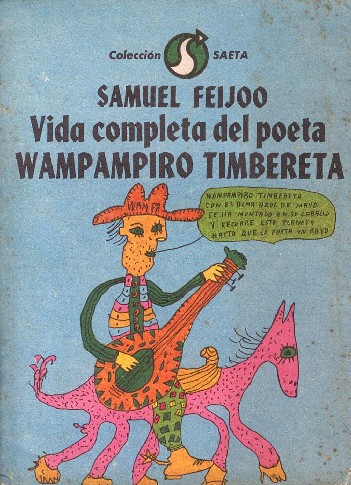4.1.1.22 The poetics of Samuel Feijóo (1914-1992)

Samuel Feijóo was one of the most prolific poets in the national tradition and one of the most important of the 20th century. However, his work is not homogeneous in terms of aesthetic achievement, and much of it remains unstudied in depth due to its sheer length and the complexities involved in compiling all his pieces. The author frequently published different versions of the same poem, under different titles, and also different poems with homonymous titles.
The fundamental theme that recurs throughout his poetic production is that of nature, the vernacular; in general, he draws almost all of his symbolism from it, or rather, he immerses himself in it, not only from a fruitful but also an intellectual point of view, since nature suggests interesting reflections to him, including an ethic rooted in the very beauty of creation, sung with words that are also natural.
In this sense, Feijóo’s poetic work connects with criollismo; although he privileged the native nature over its closest human inhabitants, peasant life is also present in this interweaving of innocence as a virtue in all spheres of life.
One of his peculiarities in terms of perspective was the way he approached death, with meekness and in its normally derogated physical sense, alluding to putrefaction from the point of view of the fertile cycle of nature, in which death somehow becomes life again and vice versa.
Although Feijóo’s poetry combines several currents and areas of meaning, a hallmark of his work is an exuberance of the natural, an inveterate cult of creatures and, in a general sense, the landscape from a hylozoic or pantheistic conception, all of which is reflected in the so-called verbal superabundance, as a recreation that aims to be a reflection of the universe and the values that emanate from it without the intervention of the social.
Feijóo’s extensive poetic work includes dozens of titles, among which the following have been confirmed, although there has not yet been an exhaustive investigation into their complete works: “The Bird of Solitude”, “Safe Stay”, “Guajiras Jiras”, “Young Segment”, “The Dawns”, “The Twilights”, “Notes”, “The Small Harmony”, “Tenue Autumn”, “Celestial Comrade (Dialogue with Eros)”, “Night”, “Half Image”, “Wandering Asylum”, “Colloquy”, “Beth-el”, “Face”, “Hymn to the Allusion of Time”, “Violas”, “The Poet’s Leaf”, “Poems of the Grove”, “Ash Beam”, “Threns”, “Full Day”, “Rag in the Sun”, “Words”, “The Wild Thinker” and “The Fool’s Bread”.
However, he published entire sections of poetry collections independently, as well as groups of them under the same title, which complicates the process of compiling his work and even defining the titles that are part of his poetic career.








